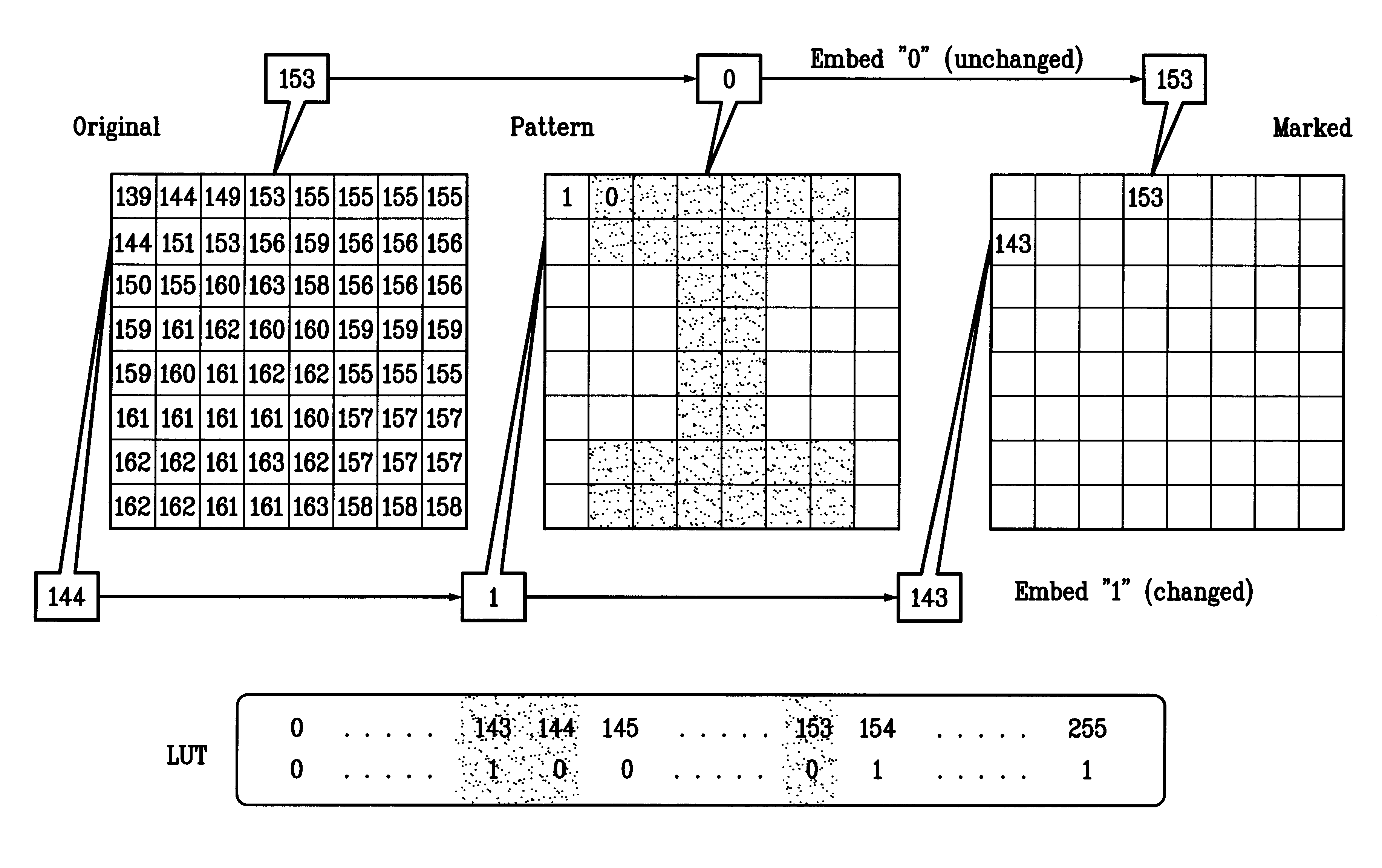Watermarking scheme for image authentication
a watermarking scheme and image authentication technology, applied in image data processing, instruments, computing, etc., can solve the problems of copyright protection, ownership verification and authentication, and previously known methods for image authentication do not have all of the above capabilities
- Summary
- Abstract
- Description
- Claims
- Application Information
AI Technical Summary
Benefits of technology
Problems solved by technology
Method used
Image
Examples
Embodiment Construction
We first illustrate the present invention by showing how to insert a binary pattern as the watermark in a JPEG compressed grey-scale image. The present invention, however, may be extended to other compression methods, such as Wavelet compression, to color images, and to video. Before describing the preferred embodiments of the invention, we will provide a brief overview of the JPEG method for lossy compression. Details can be found in the paper G. K. Wallace, "The JPEG still picture compression standard," IEEE Trans on Consumer Electronics, February 1992.
V.1 Overview of JPEG Lossy Compression
The JPEG method for image compression has been adopted as an international standard. When the image is lossily compressed, the compressed image may differ imperceptibly or significantly from the original image, depending on the parameters chosen to perform the compression.
The JPEG method is illustrated in FIG. 3. To compress an image using the method, the image is first divided into blocks, typi...
PUM
 Login to View More
Login to View More Abstract
Description
Claims
Application Information
 Login to View More
Login to View More - R&D
- Intellectual Property
- Life Sciences
- Materials
- Tech Scout
- Unparalleled Data Quality
- Higher Quality Content
- 60% Fewer Hallucinations
Browse by: Latest US Patents, China's latest patents, Technical Efficacy Thesaurus, Application Domain, Technology Topic, Popular Technical Reports.
© 2025 PatSnap. All rights reserved.Legal|Privacy policy|Modern Slavery Act Transparency Statement|Sitemap|About US| Contact US: help@patsnap.com


